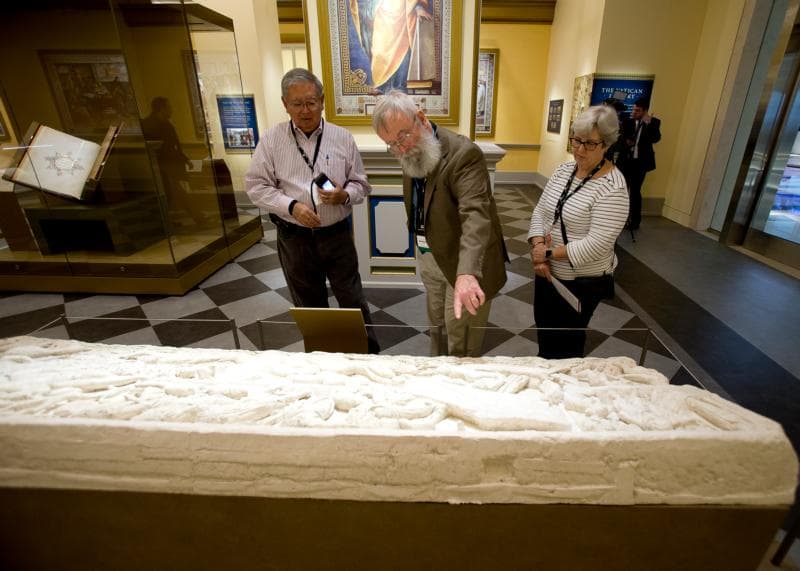WASHINGTON, D.C. — Long before the privately owned Museum of the Bible opened near the U.S. Capitol in 2017, there were published doubts about the authenticity of its 16 papyrus fragments supposedly from the Dead Sea Scrolls.
First, they were, in the terms of curatorial specialists, “nonprovenanced,” other than the “guarantees” made by those who had sold the fragments to the Green family, the billionaire founders of the Hobby Lobby craft stores.
Also, they had some indications of them being forgeries, including, to use another curatorial term, there were “paleographic anomalies.” Scholars compared the museum’s fragments with the texts of the 100,000 real pieces of the Dead Sea Scrolls first discovered in the Qumran Caves in 1947, which reside at the Shrine of the Book in Israel. The scrolls, considered the basis of the Hebrew Bible, date from approximately from around 250 B.C. up to A.D. 70.
The purchased fragments, bought by Steve Green, the museum’s chairman, for an undisclosed amount, were the prized center of the museum’s fourth-floor exhibit on the development of the Bible from ancient texts. They raised questions from the start because they were part of what were known as the “post-2002” snippets artifact dealers began to offer at that time.
In simpler terms, too good to be true, however fascinating and powerful they appeared.
In 2018, the museum announced that after five fragments had been tested at Germany’s Federal Institute for Materials Research, the pieces were likely forgeries.
On March 11 of this year, the museum confirmed the fakery of all of them. Independent researchers concluded, in a report that spans more than 200 pages, that the fragments were probably made of ancient Roman leather — from sandals — artificially aged even more with chemicals, with the script added in the 20th century.
Art Fraud Insights investigator Colette Loll concluded: “These fragments were manipulated with the intent to deceive.”
The Green family has only been collecting biblical artifacts since 2009, and now has more than 40,000. The matter of the fragments is the second time the museum has found controversy with efforts to display the history of religious faith.
In 2017, the family paid a $3 million settlement after a Justice Department investigation found that 3,500 artifacts bought in 2010 had been stolen from Iraq. The Green family returned the artifacts, and five Jerusalem-based Palestinian dealers were arrested and charged with tax evasion.
These developments could foster cynicism about the museum among its visitors, who pay between $9 and $25 for admission.
But that’s not the right conclusion, Mark Giszczak, an associate professor of sacred Scripture at the Augustine Institute in Greenwood Village, Colorado, told Catholic News Service.
Don’t let a few inauthentic objects make you cynical about authentic faith, he advised. The need for such artifacts, after all, will always be there.
“I think from a Catholic devotional perspective, it’s very important for us to have physical contact with the objects of our faith,” he said.
The museum has had a Vatican connection from its inception, announcing its founding at the Vatican Embassy in Washington in 2011. Exhibits including holdings from the Vatican Museum and Library.
In looking at ancient documents, Giszczak said, museum visitors seek “to get as close as possible to that moment of revelation.”
“That’s why people make Holy Land pilgrimages. Many make great sacrifices to experience what the disciples would have experienced. We come to a deeper appreciation of the reality of our faith. It’s very, very real,” he told CNS.
“Any way we can find a connection with God, the more we’ll feel attracted and drawn through these objects. The hunger that we have to see the real thing will never go away.”
Crux is dedicated to smart, wired and independent reporting on the Vatican and worldwide Catholic Church. That kind of reporting doesn’t come cheap, and we need your support. You can help Crux by giving a small amount monthly, or with a onetime gift. Please remember, Crux is a for-profit organization, so contributions are not tax-deductible.
















